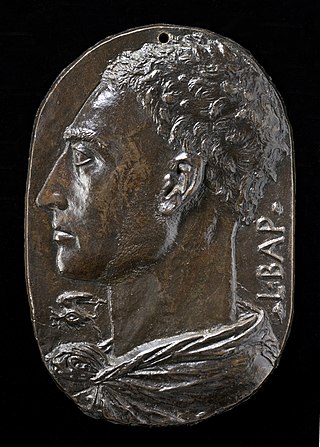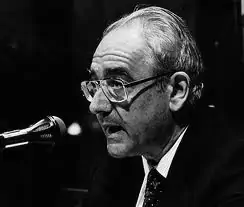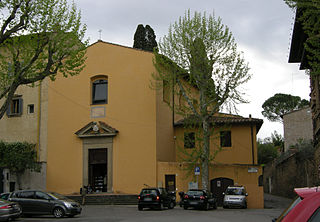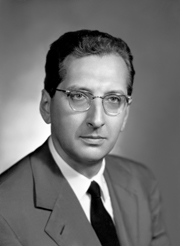Related Research Articles

Leon Battista Alberti was an Italian Renaissance humanist author, artist, architect, poet, priest, linguist, philosopher, and cryptographer; he epitomised the nature of those identified now as polymaths. He is considered the founder of Western cryptography, a claim he shares with Johannes Trithemius.
Charles-Antoine Campion, italianized as Carlo Antonio Campioni was a French-Italian composer who was born in Lorraine, France. He was a prolific composer and represented a link between Baroque compositional methods and those of the Classical style.
Mauro Cristofani was a linguist and researcher in Etruscan studies.

Eblaite, or Palaeosyrian, is an extinct East Semitic language used during the 3rd millennium BC in Northern Syria. It was named after the ancient city of Ebla, in modern western Syria. Variants of the language were also spoken in Mari and Nagar. According to Cyrus H. Gordon, although scribes might have spoken it sometimes, Eblaite was probably not spoken much, being rather a written lingua franca with East and West Semitic features.

The Derveni papyrus is an ancient Greek papyrus roll that was found in 1962. It is a philosophical treatise that is an allegorical commentary on an Orphic poem, a theogony concerning the birth of the gods, produced in the circle of the philosopher Anaxagoras. The roll dates to around 340 BC, during the reign of Philip II of Macedon, making it Europe's oldest surviving manuscript. The poem itself was composed near the end of the 5th century BC, and "in the fields of Greek religion, the sophistic movement, early philosophy, and the origins of literary criticism it is unquestionably the most important textual discovery of the 20th century." While interim editions and translations were published over the subsequent years, the manuscript as a whole was finally published in 2006.

Papyrus 36, designated by siglum 𝔓36, is a copy of the New Testament in Greek. It is a papyrus manuscript of the Gospel of John, it contains only John 3:14-18.31-32.34-35. The manuscript palaeographically has been assigned to the 6th century.
Uncial 0277, is a Greek-Coptic uncial manuscript of the New Testament. Palaeographically it has been assigned to the 7th or 8th century.

Benedetto Pamphili was an Italian cardinal, patron of the arts and librettist for many composers.
Guido Bastianini is an Italian papyrologist and palaeographer.

Agostino Paravicini Bagliani is an Italian historian, specializing in the history of the papacy, cultural anthropology, and in the history of the body and the relationship between nature and society during the Middle Ages.

Guglielmo Cavallo is an Italian palaeographer and Byzantinist, Emeritus Professor of the Sapienza University of Rome.

San Francesco di Paola is a small Renaissance-style Roman Catholic church in the Oltrarno quarter of Florence, central Italy.

Medea Vittoria Irma Norsa (1877–1952) was an Italian papyrologist and philologist. She headed the Istituto Papirologico Girolamo Vitelli in Florence from 1935 to 1949.

The two fontane dei mostri marini are located in the Piazza della Santissima Annunziata in Florence, Italy.

Alessandro Felici was an Italian composer and violinist, not to be confused with his contemporary, Roman composer Felice Alessandri.
Nicoletta Maraschio is an academic teacher of "History of Italian Language" at University of Florence. She was the first woman in charge of Accademia della Crusca, from 2008 to 2014, succeeding Francesco Sabatini.

Fausto Sbaffoni is an Italian poet and writer born in Rome, Italy, living and working in Firenze.
Bianca Bianchi was an Italian teacher, socialist politician, feminist, and writer.
Luciano Bellosi was an Italian art historian.

Cesare Luporini was an Italian philosopher, historian of philosophy and politician.
References
- ↑ Paola Pruneti Archived 2013-07-02 at archive.today Dipartimento di Scienze dell'Antichità
- ↑ P. Pruneti, Trenta testi Greci da papiri letterari e documentari, (Firenze, 1983), pp. 7-9.